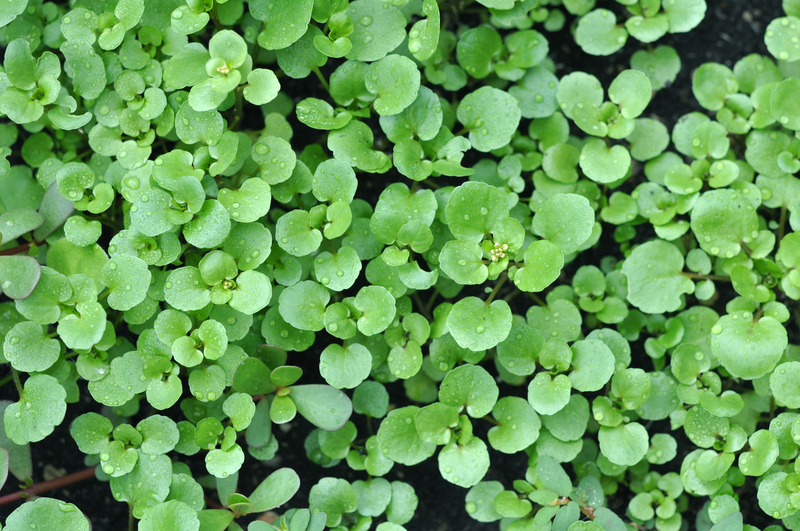Your Guide to Designing and Maintaining a Moveable Garden
Are you longing for a lush, thriving green oasis but lack the permanent outdoor space to create one? Your guide to designing and maintaining a moveable garden is here! A moveable or portable garden is not only suitable for renters, urban dwellers, and those with limited space, but also for gardeners wishing to experiment with creative, adaptable layouts. Whether you're a seasoned botanist or a budding plant enthusiast, this comprehensive guide will help you plan, build, and maintain a beautiful moveable garden that suits your lifestyle and space.

What Is a Moveable Garden?
A moveable garden is a collection of plants grown in containers or structures designed for easy transportation. These gardens can be relocated based on season, sunlight, or space requirements. If you live in a rented apartment, face ever-shifting weather conditions, or simply enjoy changing things up, a mobile garden offers flexibility and creative freedom.
Types of Moveable Gardens
- Container Gardens: Plants in pots, tubs, or baskets.
- Vertical Gardens: Hanging planters, wall pockets, or stacked shelves.
- Rolling Raised Beds: Large planters on wheels for heavier or larger plant displays.
- Tabletop or Balcony Gardens: Structured to fit on tables or railings, perfect for small spaces.
Benefits of a Portable Garden
Planning a portable garden offers numerous advantages:
- *Flexibility*: Rearrange your garden to suit your decor, sunlight, or outdoor gatherings.
- *Mobility*: Move plants indoors in winter or to protect them from harsh weather.
- *Accessibility*: Ideal for the elderly, children, or those with disabilities.
- *Experimentation*: Try out new styles, plant varieties, or growing conditions.
- *Protection*: Reduce risk from pests, diseases, and environmental factors.
Designing Your Moveable Garden
Successful moveable garden design begins with thoughtful planning. Consider your available space, sunlight exposure, your favorite plants, and lifestyle needs.
Step 1: Assess Your Growing Environment
- *Space*: Measure your balconies, patios, or indoor spots to determine how many and what size containers you can use.
- *Sunlight*: Track daily sunlight hours to choose the right plant species and placement.
- *Water Access*: Ensure a convenient water source or select drought-tolerant plants if necessary.
- *Mobility Needs*: Consider the weight of containers and ease of movement.
Step 2: Choose Suitable Containers
Selecting the right containers is essential for a healthy moveable garden:
- Material: Lightweight materials like plastic, resin, or fiberglass are easier to move than terracotta or ceramic. Fabric grow bags are another practical solution.
- Drainage: Containers must have adequate drainage holes to prevent waterlogging.
- Size: Choose sizes based on your available space and the mature size of your plants. Tall, narrow containers save floor space but may tip over more easily when moved.
- Wheels or Handholds: Opt for pots with built-in wheels or attach rolling platforms for heavy planters.
Step 3: Plan Your Plant Selection
A thriving moveable garden includes plants suited to containers with compatible light and water needs. Mix annuals, perennials, herbs, and vegetables for ongoing interest. Here are some ideas:
- Herbs: Basil, thyme, rosemary, mint, and chives
- Flowers: Petunias, geraniums, pansies, marigolds, and begonias
- Vegetables: Lettuce, cherry tomatoes, peppers, radishes, and spinach
- Succulents and cacti for sunny, low-maintenance spots
- Ornamental grasses or small shrubs for structure
For dramatic effect, follow the thriller, filler, and spiller design rule: *Thrillers* (tall plants) draw attention, *fillers* (bushy plants) add mass, and *spillers* (trailing varieties) soften container edges.
Building the Perfect Moveable Garden
Soil and Planting Mix
Choose a high-quality potting mix formulated for containers. These provide essential nutrients, retain moisture, and support good drainage. For edible plants, look for organic mixes free from chemicals. Mix in slow-release fertilizer or compost for added nutrition.
Arrangement and Placement
- Place heavier containers near structural supports or at ground level to prevent tipping.
- Group sun-loving plants together and shade-tolerant species under eaves or canopies.
- Use vertical space with shelving, stackable pots, or wall-mounted planters.
- Arrange rolling planters for accessibility, especially if you'll be moving them frequently.
Watering Systems
Consistent watering is a challenge in container gardening. Consider:
- Self-watering containers or water reservoirs
- Drip irrigation kits for multiple pots
- Watering globes or spikes for busy gardeners
- Regular hand-watering, adjusted for plant and weather needs
*Tip*: Grouping pots together conserves moisture and makes watering easier.
Weather Protection
One of the advantages of moveable gardens is the ability to shelter plants from extreme conditions. Use rolling planters to:
- Move tender plants indoors or to sheltered spots before storms, frost, or heat waves
- Optimize sun exposure by relocating containers seasonally
- Provide shade with umbrellas, cloth canopies, or shade netting in summer
Maintaining Your Moveable Garden
The key to a beautiful portable garden is proactive maintenance. Here's how to ensure ongoing success:
Watering and Fertilizing
- Check soil moisture daily during warm months.
- Water thoroughly until excess drains out and discard runoff from saucers.
- Feed container plants with diluted liquid fertilizer every 2-4 weeks, or use slow-release granules.
- Flush soil occasionally to prevent salt build-up from fertilizers.
Pest and Disease Management
- Inspect leaves and stems regularly for insects or fungus.
- Remove dead or yellowing foliage to promote air circulation.
- Isolate infested plants promptly to prevent spread.
- Use mild, natural solutions like neem oil or insecticidal soap for treatment.
Pruning and Deadheading
- Pinch off spent flowers to encourage new blooms.
- Prune overgrown branches for shape and size.
- Trim back leggy plants to promote bushier growth.
Repotting and Refreshing Soil
- Repot root-bound plants into larger containers as they grow.
- Refresh topsoil or replace it annually to replenish nutrients.
- Divide and replant herbs or perennials to prevent overcrowding.
Inspiring Moveable Garden Ideas
Urban Balcony Retreat
Transform a small balcony into a tranquil haven with stackable planters filled with fragrant herbs, compact flowering shrubs, and trailing vines. Incorporate lightweight bistro furniture for relaxation.
Mobile Vegetable Patch
Start a productive portable vegetable garden using raised beds on wheels. Grow salad greens, bush tomatoes, and peppers. Roll them indoors during harsh weather, or to follow the sun.
Blooming Vertical Wall
Attach modular wall planters to a sunny fence or exterior wall for a show-stopping display of succulents, flowers, and trailing plants. This maximizes growing space and doubles as living art.
Seasonal Color Displays
Change your container combinations with the seasons to keep your mobile garden looking fresh all year. Try spring bulbs, summer annuals, autumn chrysanthemums, and winter evergreens.

Frequently Asked Questions
- *How often should I move my container garden?* Move only when needed - for sunlight, weather, or decorating needs. Excessive movement can stress plants.
- *Can I grow fruit trees in a portable garden?* Yes! Choose dwarf or patio fruit tree varieties and use large, deep containers with rolling platforms.
- *What are the best plants for a portable garden?* Herbs, annual flowers, small veggies, succulents, and dwarf shrubs adapt best to container life and relocation.
- *How do I prevent pests in my mobile garden?* Keep containers clean, inspect plants frequently, and avoid overcrowding for better airflow.
- *Is a moveable garden good for beginners?* Absolutely! Container gardening is user-friendly, manageable, and perfect for experimenting.
Conclusion: Enjoy the Freedom of Your Moveable Garden
Your guide to designing and maintaining a moveable garden is your passport to flexible, creative, and satisfying gardening. Embrace the opportunity to personalize your green space, adapt to changing conditions, and nurture your favorite plants wherever you live. With thoughtful planning and regular care, your moveable garden will thrive, bringing beauty and tranquility to your home year-round.
Ready to start your own moveable garden? Gather your containers, pick your favorite plants, and watch your green oasis grow -- wherever you call home!